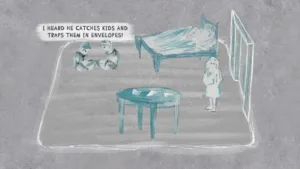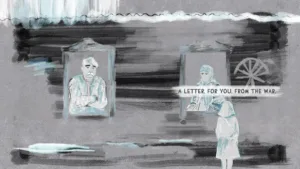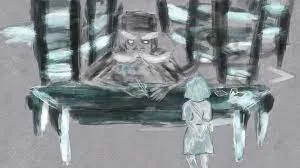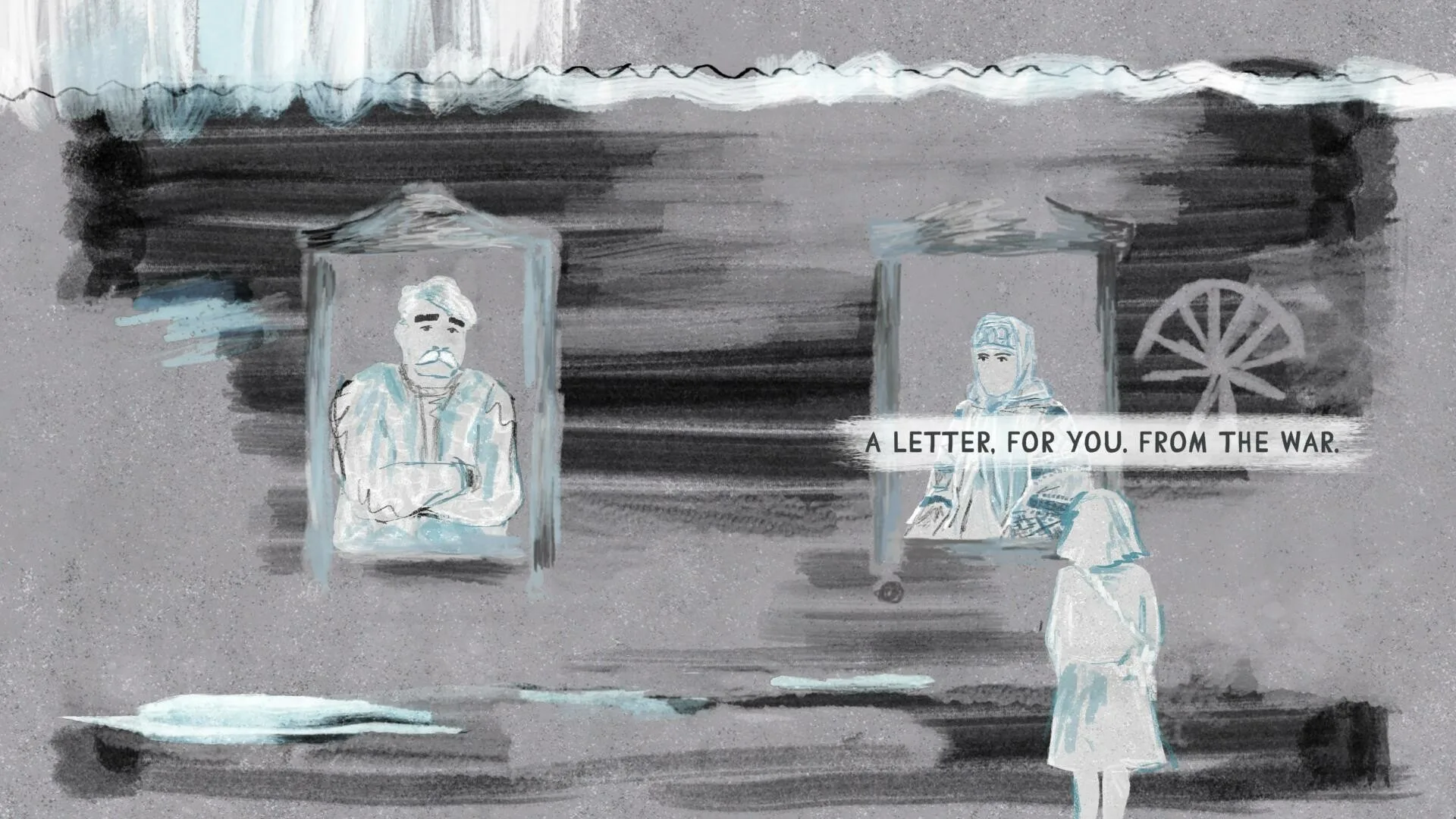A Quiet, Emotional Journey
Not all games need explosions, boss fights, or branching narratives to leave a mark. Some do it through silence, subtlety, and sincerity. Grief Like a Stray Dog is one of those games — a brief yet deeply moving experience that lingers in your thoughts long after it ends.
This is not a typical Xbox release. It’s more like an interactive memory — an emotional short story brought to life through art, sound, and restraint. It asks you to sit with grief, to carry it gently, and to understand that even the smallest moments can hold immense weight.
A Story of Burden and Humanity
The story follows Nadia, a young girl living in a small, war-torn village. With her mother unwell and her father away, she takes on a humble but heavy task — becoming the local postwoman. At first, it sounds simple: deliver letters, visit houses, talk to neighbours. But as each day unfolds, the emotional weight of her job becomes clear.
Nadia isn’t just delivering mail. She’s delivering news — and often, it’s not good. Some letters bring smiles, a glimmer of hope from loved ones on the front lines. Others deliver heartbreak, confirming the worst fears of families waiting by their doors.
The game doesn’t sensationalize these moments. Instead, it gives them space to breathe. A mother clutching a letter with trembling hands. A child asking when their father will come home. Nadia standing in silence, unable to offer comfort beyond the words she carries. It’s simple storytelling, but deeply effective.
What gives the narrative its strength is its honesty. There’s no melodrama, no forced sentiment. Just the quiet truth of ordinary people enduring extraordinary times. And while the story unfolds in a historical setting, its themes of loss, empathy, and resilience feel timeless.

Gameplay: Stillness with Purpose
Mechanically, Grief Like a Stray Dog is minimalist. Each “day” begins with you collecting the mail, viewing a map of the village, and selecting which homes to visit. The controls are straightforward — walk, interact, deliver. It’s not about challenge or skill, but about presence.
You’re not expected to rush or multitask. In fact, the game almost encourages you to slow down. Walk the dirt roads. Listen to the distant sounds of life in the village — a barking dog, the wind brushing through empty fields. These quiet interludes give space to reflect on what’s happening.
There’s no fail state, no way to “win.” Each delivery is a small vignette, a glimpse into someone’s life. The simplicity may frustrate players looking for more interactivity, but it’s deliberate. The restraint keeps the focus where it belongs — on the emotion behind every exchange.
By the time you deliver the last letter, you’ve come to understand that this is less a game about doing and more about feeling. Every small interaction becomes a mirror to the game’s title — we are all, in some way, stray carriers of grief, trying to find where we belong.

Visuals: Art That Speaks Without Words
Visually, Grief Like a Stray Dog is stunning in its simplicity. It uses hand-painted artwork that feels both delicate and haunting. The village is rendered in muted tones — faded greens, greys, and browns that evoke the exhaustion of wartime life.
Every frame looks like it could hang in a gallery. The brushwork is rough and expressive, like a memory half-forgotten. The art style shifts fluidly between realism and dreamlike abstraction, giving the impression that you’re walking through a painting that remembers pain.
Certain scenes stand out vividly. A forest path shrouded in mist. A lone figure reading under candlelight. A symbolic sequence that blurs the line between reality and memory. The visual storytelling is confident, knowing when to hold still and when to let imagination take over.
This is not a flashy game, but it’s one of those experiences where the visuals perfectly match the mood. Every stroke of colour, every shadow, every empty corner feels intentional.

Sound & Atmosphere
The sound design in Grief Like a Stray Dog is equally restrained yet powerful. The ambient noise — wind, footsteps, the creak of old wood — creates an atmosphere that’s heavy but alive. The sparse musical score relies on soft piano notes and ambient hums, surfacing at just the right moments.
Silence plays as big a role as sound. When Nadia delivers a particularly devastating letter, the world seems to stop. The lack of music becomes deafening. It’s a brave design choice that makes each emotional beat hit even harder.
And when the credits roll, a brief moment of real human connection closes the story. It’s personal, poignant, and feels like the emotional heartbeat of the entire experience. You won’t forget it.

Pacing & Emotional Impact
At around an hour long, Grief Like a Stray Dog doesn’t overstay its welcome. It’s short, sharp, and deliberate. Every scene matters; every line of dialogue serves a purpose.
The pacing is gentle but unrelenting — the emotional weight builds quietly until it suddenly catches up with you. The first few letters are delivered with routine indifference, but as the days pass, the cumulative toll becomes impossible to ignore.
When the story finally resolves, it does so with grace. There’s no twist, no spectacle — just a quiet acknowledgment of what’s been lost, and what little remains. That understated conclusion gives the game its power.

Performance & Presentation
On Xbox, Grief Like a Stray Dog runs flawlessly. The menus are minimal, load times are short, and controls are intuitive. The developers clearly knew that technical distractions would break immersion — everything is streamlined to keep your attention on the story.
The text presentation is clean and easy to read, and accessibility options allow for a comfortable experience even in its minimal interface. For what the game sets out to do, it delivers with precision.

Final Verdict
Grief Like a Stray Dog isn’t about gameplay — it’s about empathy. It’s about carrying messages that aren’t yours, bearing witness to someone else’s pain, and walking through silence without turning away. It’s an artful, mature experience that uses minimalism to its advantage.
For players who love story-driven games, this is a gem. It’s raw, personal, and quietly devastating. It might only take an hour to finish, but its impact lasts much longer.
For those seeking fast-paced action or complex mechanics, this won’t be your game. But if you’re open to something slower, sadder, and more introspective — something that feels like literature more than entertainment — Grief Like a Stray Dog deserves your attention.
It’s proof that even the smallest stories can carry the heaviest hearts.
Overall
-
CX Score - 75%75%
Summary
Pros
-
Emotionally rich storytelling that feels authentic and deeply human
-
Gorgeous, painterly visuals with expressive style
-
Excellent use of sound and silence to heighten atmosphere
-
Simple mechanics that support the story instead of distracting from it
-
A powerful, resonant ending that ties everything together beautifully
Cons
-
Very limited interactivity; may not satisfy players wanting deeper gameplay
-
Short runtime; can be completed in just over an hour
-
Some sequences are so minimal they risk losing player engagement
-
The heaviness of tone won’t appeal to everyone
-
No replay variety beyond revisiting the story for emotional impact

